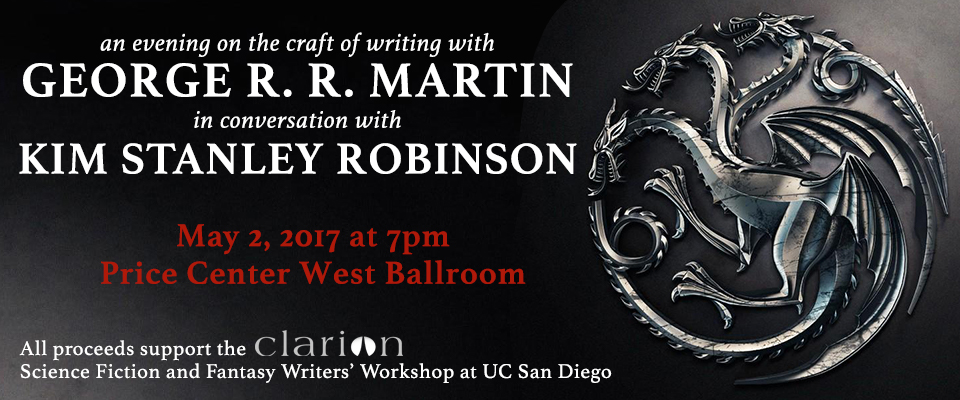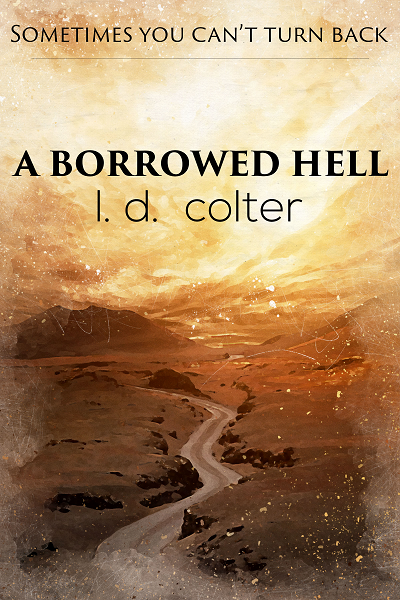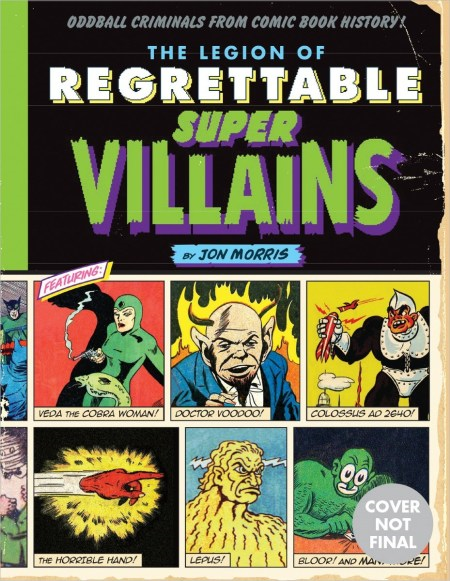(1) HELP COMING FOR INDIE AUTHORS. Brian Keene, in the August 17 episode of his podcast The Horror Show, mentioned a new resource for librarians. Dann explains:
Small press and indie authors face the double problems of getting bookstores to carry their books and getting local libraries to put them on their shelves. According to horror author Brian Keene, those problems are significantly influenced by the fact that books from small presses and indie author are rarely reviewed by recognized resources such as Publishers Weekly. Librarians, in particular, are reluctant to order books that have not been reviewed by another professional librarian.
There is a new magazine on the horizon that hopes to rectify that issue by focusing on reviews of works from small presses and indie authors. Indie Picks Magazine aims to become a librarian quality resource that focuses on works beyond those published by the Big 5 publishing houses.
The first issue is due out on November 1, 2017. Social media links —
- https://twitter.com/IndiePicksMag
- https://www.facebook.com/indiepicksmag/
- https://indiepicksmag.com/
(2) DON FORD. J.J. Jacobson, UC Riverside’s Jay Kay and Doris Klein Librarian for Science Fiction, says 1949 Worldcon chair Don Ford also left his photos to them.
It may also give you joy to know that we have a gift of several hundred similar photos from the family of Midwest fan and photographer Don Ford, some dating back to cons from the 1940s. Ultimately these will join the Klein photos on Calisphere.
(3) ROCKET EXPERIMENT. In “Can We Categorize Clipping?”, the Hugo Award Book Club tries to define a category a musical album can win that wouldn’t have to be called Best Musical Album.
Splendor and Misery from L.A.-based experimental hip hop group Clipping is an ambitious and challenging work that is an exemplar of this tradition. In the 2017 Hugo Awards, it became only the second such work to be nominated for a Best Dramatic Presentation Hugo Award (after the 1971 album Blows Against The Empire by Jefferson Starship, which finished in the voting below ‘No Award’). However, Splendor and Misery failed to generate much popular support among voters, placing last amongst other nominated works in the category and losing to Leviathan Wakes from the TV series The Expanse. While Leviathan Wakes is an awesome bit of television (and is the work that we voted for) it is kind of a shame that there isn’t a good category to recognize eclectic and unusual works in the Hugo Awards.
(4) ALIENS OF EARTH. Fantasy-Faction’s Nicola Alter considers “The Creatures We Base Aliens On”.
One of the interesting things about fictional aliens is that they’re almost never completely alien. We have no real idea what extra-terrestrials would look like, and it’s nigh impossible to imagine an entirely new species unlike anything we’ve ever seen. As such, we usually fall back on earthly species for inspiration, combining known elements to create strange new creatures. And we certainly have some bizarre real animals to choose from.
Last year I wrote about our penchant for basing aliens on cephalopods, but octopuses, cuttlefish and squids aren’t the only creatures that inspire us, so I thought I’d take a step back and look at a broader range of favourite sources…
(5) WONKS OF WESTEROS. The Libertarian think tank The Cato Institute will be hosting a Policy Forum about “The Politics of Game of Thrones” on Monday, August 28. It will be livestreamed.
Why is Westeros mired in 8,000 years of economic stagnation? Should Daenerys firebomb King’s Landing to prevent a longer war? The world of Game of Thrones is teeming with fascinating interactions between institutions, incentives, and power that creates a sweeping geopolitical mega-saga just begging to be theorized. An examination of these issues through the lens of economics, law, international relations, and power politics promises to be both instructive and entertaining. The day after the Season 7 finale airs, join the Cato Institute and the R Street Institute in an exploration of the intrigue and game theory (and inevitable analogies to our current political landscape) that pervade the world of ice and fire.
Featuring Ilya Somin (@IlyaSomin) Adjunct Scholar, Cato Institute; Matt Yglesias (@mattyglesias) Co-founder and Executive Editor, Vox; Peter Suderman (@petersuderman) Senior Editor, Reason; Alyssa Rosenberg (@AlyssaRosenberg) Culture Columnist, Washington Post Opinions Section; moderated by Caleb Watney (@calebwatney), Tech Policy Analyst, R Street Institute.
If you can’t make it to the event, you can watch it live online at www.cato.org/live
(6) PASSING THE HAT. Time for the 2017 Strange Horizons fund drive.
We, Strange Horizons, are a non-profit organization run entirely by volunteers. We don’t do the whole advertising thing, and we have no corporate sponsors. It’s through your donations, and your donations alone, that we’re able to pay our contributors and publish a new issue 51 weeks of the year.
This year, we’re trying to raise US$16,000 to keep the good ship Strange Horizons chugging along at its current speed. If we manage to hit that level of funding, we’ve got a few new things planned, too. If that’s enough for you, then you can find out how to donate on our IndieGoGo page. And thank you!
But hey, maybe you’re not quite convinced yet. Maybe you’re wondering what exactly we’ve been up to and what we plan on getting up to next year. Read on—the answers you seek are below! …
(7) HUSH-A-BOOM. This is almost worthy of Galactic Journey — the BBC’s story about a Sixties Soviet superweapon: “The monster atomic bomb that was too big to use”.
Tsar Bomba was no ordinary nuclear bomb. It was the result of a feverish attempt by the USSR’s scientists to create the most powerful nuclear weapon yet, spurred on by Premier Nikita Khruschchev’s desire to make the world tremble at the might of Soviet technology. It was more than a metal monstrosity too big to fit inside even the largest aircraft – it was a city destroyer, a weapon of last resort.
The Tupolev, painted bright white in order to lessen the effects of the bomb’s flash, arrived at its target point. Novya Zemlya, a sparsely populated archipelago in the Barents Sea, above the frozen northern fringes of the USSR. The Tupolev’s pilot, Major Andrei Durnovtsev, brought the aircraft to Mityushikha Bay, a Soviet testing range, at a height of about 34,000ft (10km). A smaller, modified Tu-16 bomber flew beside, ready to film the ensuing blast and monitor air samples as it flew from the blast zone.
In order to give the two planes a chance to survive – and this was calculated as no more than a 50% chance – Tsar Bomba was deployed by a giant parachute weighing nearly a tonne. The bomb would slowly drift down to a predetermined height – 13,000ft (3,940m) – and then detonate. By then, the two bombers would be nearly 50km (30 miles) away. It should be far enough away for them to survive….
(8) GENTRIFICATION. Gordon Ramsay’s kitchen is more dangerous than this. Hell’s Kitchen is no longer as shown in The Defenders: “Marvel Comics Meet Reality On The Not-So-Mean Streets Of Hell’s Kitchen”.
That’s when the editor-in-chief of Marvel Comics moved to New York City — in the ’80s. Axel Alonso met me on West 54th St, and I asked him why this neighborhood is so important in the Marvel Universe. “In Marvel comic books, Hell’s Kitchen sort of functioned as Mean Street Central, the underbelly of society, the place where there are predators and prey.”
Today, those predators are more likely to be the people charging you $50 for a blowout, or $20 for an omelette at brunch. “We’re fudging the truth with Hell’s Kitchen right now, you know, as you and I walk the streets, we see the development and the cafes,” Alonso says.
The New York of an earlier time informed so many iconic comics. Alonso says fans would revolt if you moved characters deeply associated with New York to anyplace authentically grittier, like Detroit. Alonso adds that Luke Cage’s Harlem has been updated, much more so then Hell’s Kitchen. And the Marvel universe is making a point of weaving in stories about gentrification: In Netflix’s Daredevil, an evil real estate mogul kills tenement activists who will not move out of their rent-controlled apartments. He’s motivated only by greed.
Chip Hitchcock adds, “Actually, it hasn’t been that gritty for some time; Penn and Teller were performing there in 1985, right next to a nice French restaurant, before moving to Broadway.”
(9) CELEBRITY BRUSH. I never met the late Brian Aldiss. Lou Antonelli did, sort of. “The time I stepped on Brian Aldiss”.
That year [2004] was the last where the members of the Science Fiction Hall of Fame were inducted at the [Campbell] conference (the event has since moved to the sf museum in Seattle). The living inductees were Brian Aldiss and Harry Harrison. We arrived in Lawrence just in time for the dinner, and as I rushed into the student center – worried that we were running late – I saw a pair of old timers in tuxes heading for the door from the opposite direction. As I ran up, I realized they were Aldiss and Harrison. In a clumsy attempt to be a gentleman, I grabbed the door to hold it open for Aldiss, who was first. But as I walked around him, I stepped on the back of his shoe and gave him a “flat tire”. (My wife tried to make me feel better later by pointing out that Aldiss was wearing house shoes).
(10) TODAY’S BIRTHDAY BOY
- Born August 21, 1920 — Christopher Robin Milne, A. A. Milne’s son who he modeled Christopher Robin after in the Winnie the Pooh stories.
(11) TODAY IN HISTORY
- August 21, 1981 — John Landis’ An American Werewolf in London premieres in theaters.
(12) COMIC SECTION. John King Tarpinian spotted Edgar Allan Poe in today’s Bliss.
(13) IN THE SQUARE. Kalimac, in “confederate statues”, adds cultural context to the monument controversy. Historical analysis precedes this excerpt:
…And I think it’s because of that acknowledgment that, up until now, Northerners have ignored the profusion of statues of Lee and Jackson and anonymous Confederate soldiers that festoon Southern town squares. After all, they were great generals and brave soldiers. Let the descendants have their pride.
Up until now. Not any longer. Because if that’s the history that we had that’s now being forgotten, there’s another history that the books I read had ignored that’s now being rediscovered. And that is that the ex-Confederates and their descendants have not been living up to their side of the bargain. And not just in the hard facts of racial oppression in the South for over a century and still echoing in ugly ways today, but also in the symbolism which is the subject of the consensus.
Those statues. They aren’t lovingly-crafted monuments erected in the echo of the loss, like the WW1 cenotaphs in every British town and college chapel. They’re cheap mass-produced knock-offs from Northern factories, put up later, in the Jim Crow era, not in memory of a loss but in defiance of that loss. (the evidence) Look at the capital letters in the term “Lost Cause” and read what’s been said about it. Its memorializers don’t acknowledge it was bad, they only regret that it was lost.
Nor do we notice who’s being honored. There’s Jackson, who died during the war (of the aftereffects of “friendly fire,” by the way), and thus had nothing to say afterwards. There’s Lee, who retired from public life and quietly became a college president. But where is the CSA’s third best general, James Longstreet? You don’t see many statues of him. After the war, he became a Republican and actively co-operated with the Union government. For that, he’s considered a shame in the white South. Confederate apologist historians retroactively blame him for Gettysburg, at best a dubiously tenable position, even hinting that he was secretly a traitor to his cause.
(14) THE TRILOGY FINALE. His Felaptoncy assays a new release: “Review: The Stone Sky by N.K.Jemisin” at Camestros Felapton.
The future world, the one in which most of the books is set, has descended further into physical disaster. The former community of Castrima is now a band of refugees heading towards an empty city in a brutal march which many won’t survive. In a different novel, this struggle would be an account of good and evil but Jemisin avoids treating even monstrous people as monsters. There is no character that appears in any one of the trilogy who is not granted some compassion by the writer – not Schaffa the murderous guardian, nor Jija the child murdering father. Yet this compassion is not at the expense of a strong moral centre to the story and a channelled anger at the use of hate to dehumanise and to brutalise a society
(15) IN RE DANMORE. Rose Embolism promised to boost the signal for this Medium post, which may appeal to the superscientific among you. I suppose it doesn’t hurt any that the piece begins with a Terry Pratchett quote.
PhD candidate Erin Giglio, who I know from metafilter, has done a response to James Danmore’s Google memo, using actual science. And by that I mean it’s an incredibly thorough, well researched paper on the current science on gender, that looks at and devestates Danmore’s s “scientific” arguments.
Aside from being a comprehensive rebuttle to Danmore’s memo, I find it a fascinating, if long and technical read about the current state of biological science.
“The truth has got its boots on: what the evidence says about Mr. Damore’s Google memo”
(16) YOU ARE NO. 6 The Telegraph answers the question “How did The Prisoner ever get made?”
Fifty years ago, The Prisoner began serving time. McGoohan – its star, executive producer, and sometime writer-director, a hard-drinking, intransigent Irish-American actor with a sharp Olivier-like edge to his voice – became Number Six, a former secret agent who knew too much to be permitted his freedom. For 17 weeks, he struggled against the mysterious authorities of the Village, personified by Number Two – not an individual, but an office occupied by a shifting cast of guest stars. (Leo McKern, Mary Morris and Peter Wyngarde were memorable incumbents.) He resisted their mind-bending tricks and interrogation techniques, attempted to escape by land, sea and air, and strove to solve the defining mystery of the series – who is Number One?
(17) AT HELSINKI. Finished commenting on the Hugos, Cora Buhlert continues her Worldcon coverage with “WorldCon 75 Photos and a Report”.
All in all, I had a great time at WorldCon 75. I also think the convention staff did a great job, even if there were some hiccups. And indeed, when I still had some of the German candy I’d brought to Helsinki left over on the final day of the con (the chocolate was all gone by this point), I gave the final two bags to the program ops team, because they really deserved a thank you for all their hard work.
Coincidentally, my Mom enjoyed WorldCon a whole lot, too. She’s not a hardcore SFF fan – SFF is just something she enjoys watching and reading on occasion. However, she was very impressed by the sheer number and variety of people who’d been brought together at Messukeskus by their shared love for science fiction and fantasy. There were fans of all ages, shapes and sizes at WorldCon 75, from babies being carried in a sling at their mother’s chests to people in their eighties and beyond (Robert Silverberg, now 82, was the oldest person I recognised). It was a testament to what a welcoming place fandom is.
(18) PROMOTIONAL GIMMICK. NBC Sports’ Chris Calcaterra says a minor league team intentionally scheduled a game during the eclipse: “Minor league teams prepare for a ‘total eclipse of the park’”
The Salem-Keizer Volcanoes are a class-A affiliate of the San Francisco Giants. Today, the path of totality of the big solar eclipse we’re not supposed to look at will pass right through the ballpark in which they play. What’s better: the Volcanoes are playing a game against the Hillsboro Hops as it happens.
This was by design: the team’s owner requested this home game when the schedule was made up two years ago specifically to market the heck out of the eclipse. They’re starting the game at 9:30 this morning, Pacific time, in order to maximize the fun. Spectators will receive commemorative eclipse safety glasses to wear. The game will be delayed when the eclipse hits and a NASA scientist named Noah Petro, who is from the area, will talk to the crowd about what is going on.
(19) LIGHTS OUT. Chris Barkley shot this 9-minute video of his experience watching today’s total eclipse.
(20) VIDEO OF THE DAY. In Chuck Jones –The Evolution of an Artist, Tony Zhou looks at 35 Merrie Melodies to understand Chuck Jones’s genius as an animator.
[Thanks to John King Tarpinian, JJ, Martin Morse Wooster, Rich Lynch, John Hertz, Dann, Chris Barkley, Mark-kitteh, Rose Embolism, and Michael J. Walsh for some of these stories. Title credit goes to File 770 contributing editor of the day Daniel Dern.]











